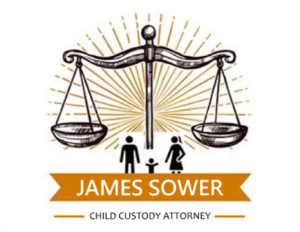Understanding Child Custody Laws in California
Too often, emotions tend to come to the surface during a divorce. Spouses may hate each other or sometimes be unavailable to their children. Unfortunately, some spouses also resort to taking advantage of child custody as a means to get back at their ex. All of this can significantly affect your child’s well-being and peace of mind.
If you are about to get divorced, your main concern would be the children. As a parent, you will naturally want to minimize the effects of divorce on your children. You will want them to continue with their lives the same way they did before the divorce and to receive the same love and attention from both parents.
Therefore, both parents must work together to ensure that their children are not traumatized by the whole thing.
The most pertinent question that arises during a divorce is how custody and visitation will be decided. Both parents want to have primary custody and do what they think is best for their child. During this time, it is necessary to know who makes that decision and based on what factors.
All parents should understand how child custody is awarded in California and the factors that affect custody. Spouses can reach an agreement on their own without a court order. This collaborative approach generally benefits all parties, including children. It helps maintain friendly relations between parents long after the divorce and minimizes conflicts in front of the child.
However, not all spouses can work together, necessitating a court trial. Sometimes a bitter spouse can make things more difficult for the other. But because the stakes are so high, you, as a parent, must do everything you can to ensure the best interests of your child.
At this time, many important decisions need to be made that will determine your child’s future and happiness. To do it right, you need an experienced attorney who can provide you with the proper advice to guide you toward a beneficial resolution and obtain a custody agreement that is best for your child.
You should also know your rights and obligations as a parent, understand the options before you and what to expect next.
In this blog, we will talk about the basics of child custody laws in California.
How is child custody determined in California?
The determining factor influencing child custody in California is the best interests of the child. The courts have wide discretionary powers in this regard. A family court judge must look at the individual circumstances of the case to determine what type of custody arrangement is best for the child.
The best interests of the child are determined by several factors including, but not limited to:
- The desire and preferences of the child, given that he or she has reached the age and maturity to make such decisions (usually 12 years).
- Age and health of the child.
- Emotional bonds between the child and parents.
- The parents’ ability to care for the child.
- The emotional and mental stability of both parents.
- Any criminal history or record of substance abuse.
- Any record of domestic violence from either parent.
The judge’s final custody order is based on these factors and more.
Types of Child Custody in California
Custody can be physical and legal, both being joint or sole. Let’s explore each in detail:
1. Legal custody
Legal custody refers to the rights and responsibilities of a parent to make important decisions for the child. Legal custody can be joint, where both parents have the right and responsibility, or exclusive custody, where only one of the parents has it. The parent with legal custody can make decisions such as:
- The education of the child
- religious activities
- Health care
- vacations and trips
- Extracurricular activities
Joint custody is granted when both parents can work together for the well-being of the child.
2. Physical Custody
Physical custody is the right of the parents to take care of the child’s accommodation. The child resides with the parent who has physical custody. The court may award joint physical custody when the child lives with both parents, although this does not necessarily mean that the time will be split in half. Typically, one parent gets more custody than the other and is called the primary custodial parent.
Alternatively, there may be cases where both parents can make important decisions about their child’s future, but only one gets physical custody. The child resides with one parent while the other has visitation rights.
3. Sole Custody
Sole custody is when one parent has physical and legal custody while the other has visitation rights. There may be cases where the court determines that sole custody is in the best interest of the child. However, sole custody is granted when one party is unfit to raise the child or resides far away from the other, making it difficult for the child to move around.
The non-custodial parent can get:
- Scheduled visits
Scheduled visits where both parents create a schedule that clearly defines visiting times;
- Reasonable visits
When both parents make an open visitation plan; and
- Supervised visit
Supervised visits are those in which the parents visit the child in front of a family member or professional agency.
The court may completely deny visitation rights to a parent if that parent poses a physical or mental danger to the child and any physical contact with them is not in the child’s best interest.
4. Joint custody
Joint custody is the most common type of custody arrangement. Courts also favor this type of custody because it allows the child to maintain a healthy relationship with both parents. This arrangement is made when the parents also have a healthy relationship with each other. The court can adopt an agreement that suits the parents’ circumstances.
While joint legal custody is commonly granted, joint physical custody is granted when both parents reside near each other, making it easier for both to spend time with their children.
Factors Affecting Child Custody in California
As mentioned above, courts will look at the best interests of the child before awarding custody to one or both parents.
Children have the right to spend time with both parents, as long as they are properly supervised and cared for. The court will also consider other circumstances and the family dynamics involved in each case. The judge must defend the best interests of the child and provide him with the best possible home. Factors such as the parents’ behavior, their jobs, how they raised and cared for their children, and the parents’ family background will be taken into account.
The child can have a say in which parent he or she wants to live and spend time with. If the child is not mature enough, the court may not consider his/her preference as they can be easily manipulated by parents. Again, there is no specific age at which a child is considered mature enough to make their own decisions. The court will consider it on a case-by-case basis.
Get Help with Custody and Visitation Arrangements with a Child Custody Lawyer
Obtaining custody and finalizing a visitation schedule are important aspects of every child custody case. At López Scca we care about your family.
Our attorneys understand your challenges and offer the best possible solution to your family law dispute. We prioritize your child’s best interests and prepare you for a favorable outcome in court.
Get in touch for a free consultation. We can help you with a custody agreement with the safety and well-being of your children in mind.



Leave a Reply
Want to join the discussion?Feel free to contribute!